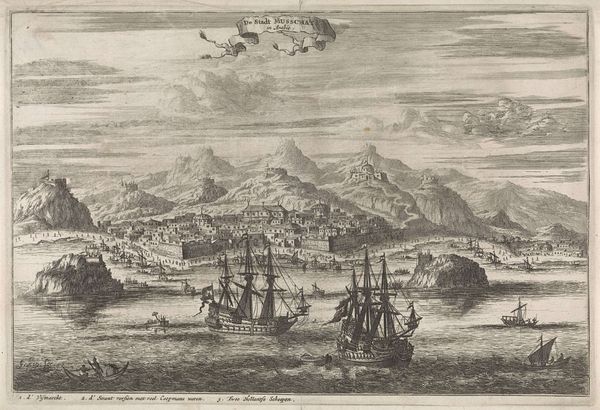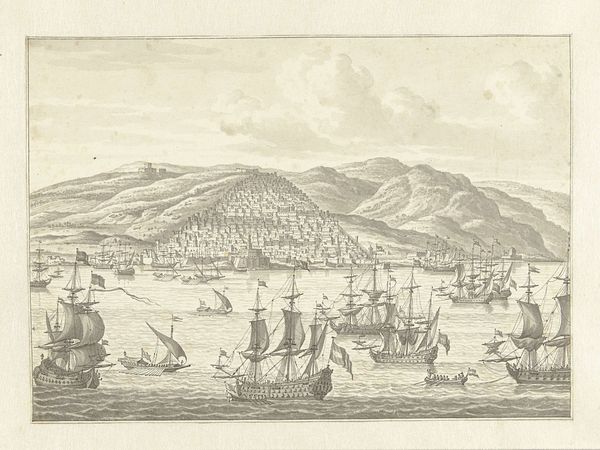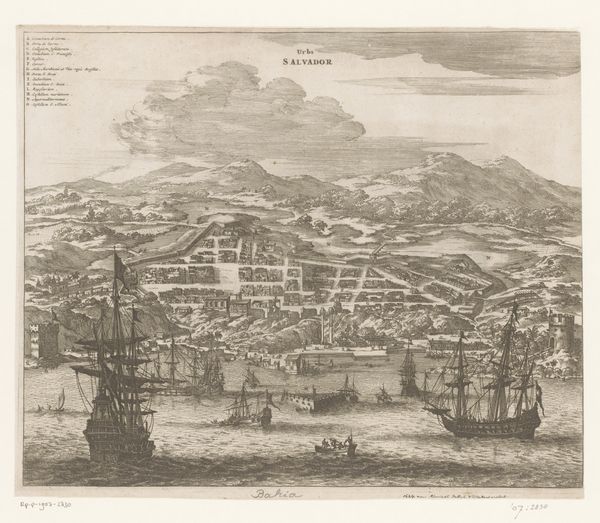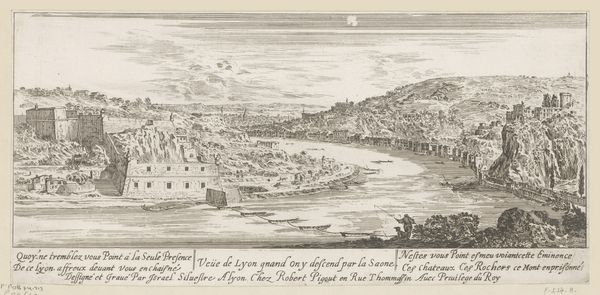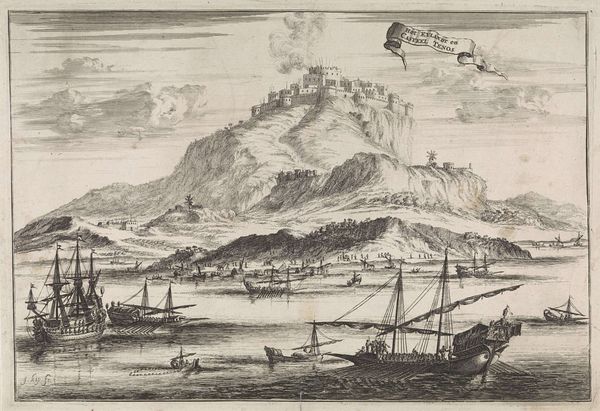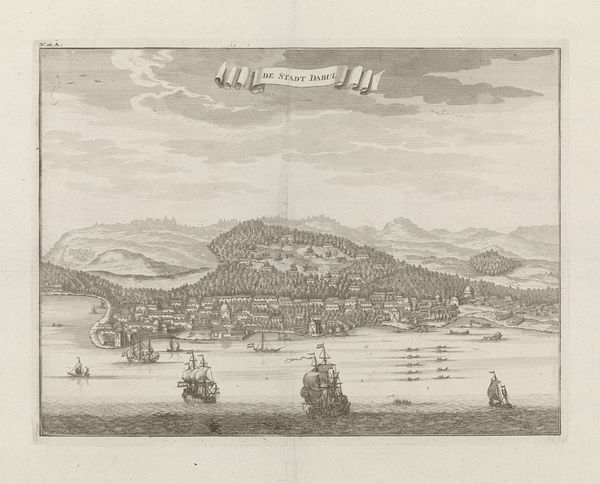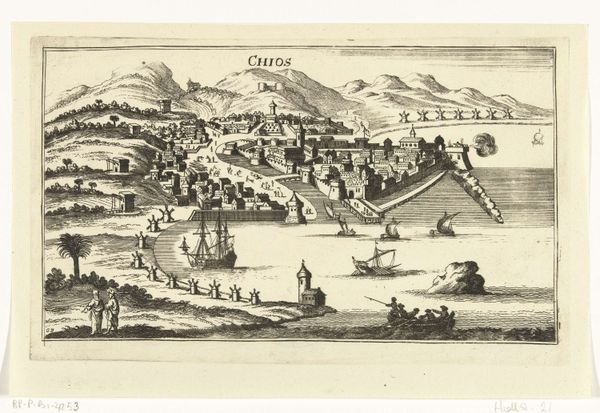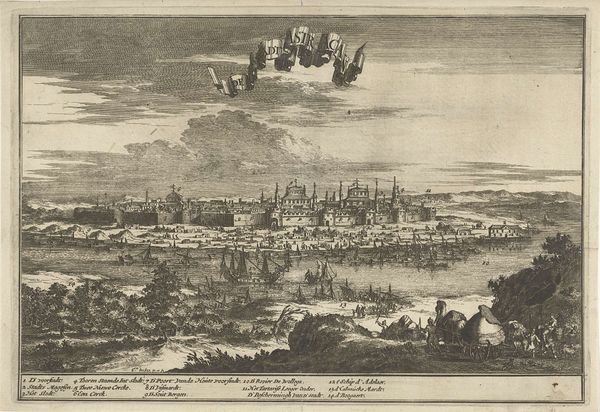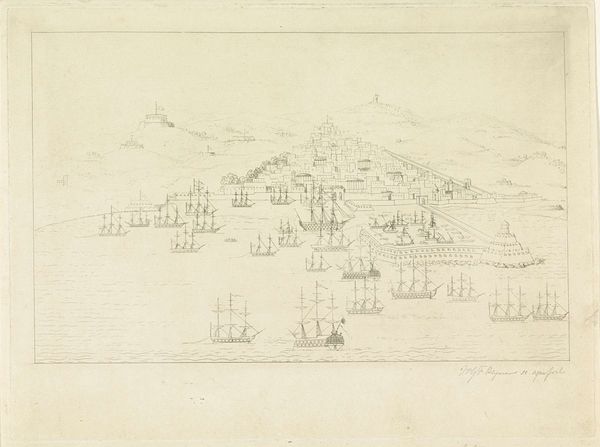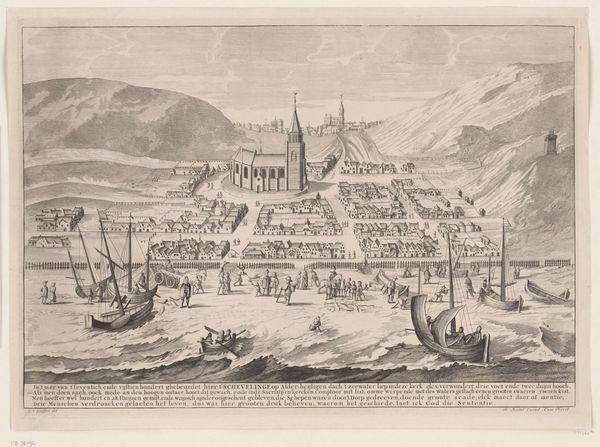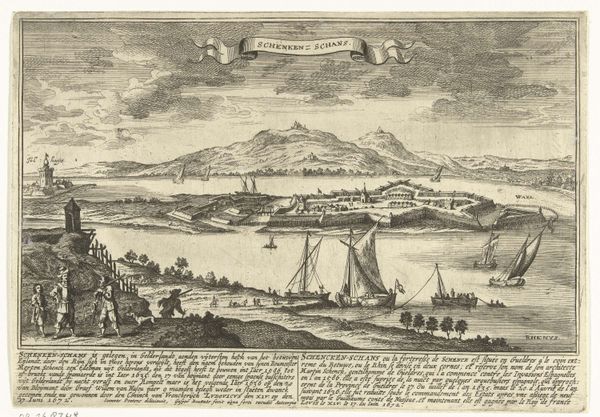
Dimensions: height 320 mm, width 407 mm
Copyright: Rijks Museum: Open Domain
Curator: This print, entitled "Bombardement van Algiers, 1816," depicts a dramatic historical event. What are your first impressions? Editor: Stark, almost desolate. Despite all the visual noise, there is something profoundly unsettling about its presentation of power and vulnerability, simultaneously displayed through city and ships aflame. Curator: Yes, the dynamism is undeniable. Notice how the artist utilizes a bird's-eye perspective to establish a sense of spatial organization, contrasting the orderly lines of ships with the dense architecture of Algiers. Semiotically, we can read the composition as a dialogue between order and chaos, control and destruction. Editor: But what is controlled chaos? This historical portrayal presents a complex network of maritime dominance, illustrating a period defined by colonialism. The attack, led by British naval forces, ostensibly aimed to suppress piracy and free European slaves. Yet, its underlying motivations cannot be divorced from Britain's strategic interests. How do you contend with that ethical quandary of their so called "righteous" warfare? Curator: Indeed, an ethical quagmire that reveals how form can reflect historical tension. Consider the tonal gradations created by the engraving technique—the artist masterfully uses light and shadow to create depth. These gradations contribute to a somber mood, reflecting the gravity of the event depicted. This is not only an aesthetic choice but also a strategy to create a historical and emotional impact. Editor: Agreed. But as the smoke settles, we must consider how this spectacle reshaped geopolitical realities and the far-reaching legacy of colonialism and neo-colonial influence over the region. The artist captures this, the "distant" overview somehow creates emotional distance, and almost allows us to ignore what really happened. Curator: Precisely. It underscores how historical narratives often involve multiple, sometimes contradictory, interpretations and can create new understandings for different viewers. Editor: A conflict frozen in time through artistry. Curator: And a complex formal arrangement open to multiple interpretations across historical analysis.
Comments
No comments
Be the first to comment and join the conversation on the ultimate creative platform.
